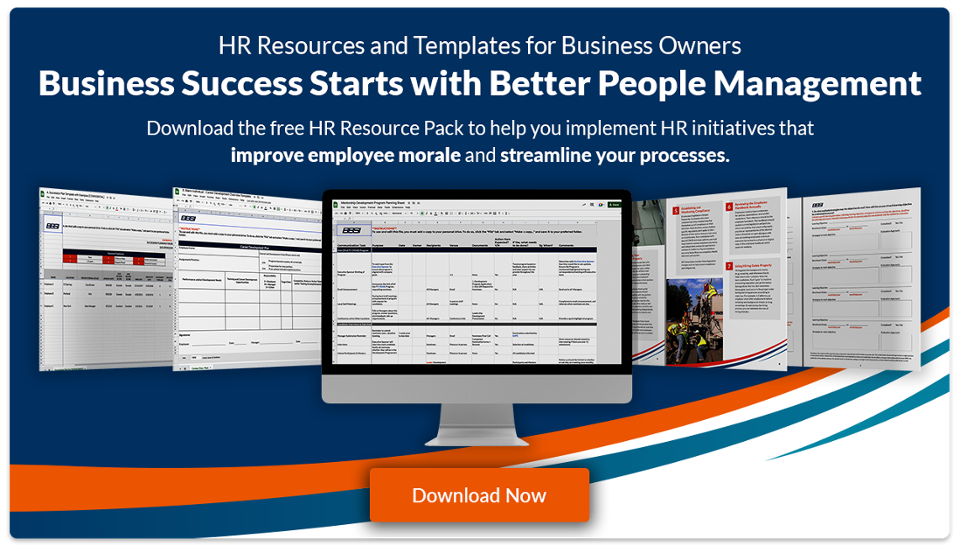
Understanding Paid Family Medical Leave (PFML)
One of the many responsibilities of a business owner is staying up-to-date on employment laws and regulations. By remaining compliant, they can ensure the safety and welfare of their employees, build trust with customers, and avoid fines and potential litigation.
One important labor law to brush up on is Paid Family Medical Leave (PFML). PFML enables eligible employees to take paid leave from work to recover from serious illnesses, care for sick or injured family members, and bond with their newborn or newly adopted children.
While Paid Family Medical Leave is currently offered in a few states, this is a growing area of new law and it’s estimated that many states will have some type of PFML program by 2030. Some proposals for national Paid Family Medical Leave programs are also in the works.
This article will cover the basics of Paid Family Medical Leave programs and discuss how you can easily implement PFML at your company.
Paid Family Medical Leave vs. Family and Medical Leave Act: What’s the Difference?
In many ways, Paid Family Medical Leave programs are similar to the federal Family and Medical Leave Act (FMLA). The FMLA Act was put into effect in 1993. Since then, employees who meet eligibility requirements, such as being employed by companies with over 50 employees are entitled to up to 12 weeks of unpaid, job-protected leave for specific medical and family-related reasons. Some of these reasons include:
- Dealing with a serious health condition
- Caring for a qualifying family member with a serious health issue
- Caring for a covered service member with a serious health issue or injury
- Giving birth to and bonding with a newborn child
- Fostering or adopting a child
While the FMLA Act protects employees’ positions at their companies, it doesn’t guarantee them any income. Thus, many employees still struggle to afford time away from work. The Pew Research Center found that 40% of employees who took FMLA leave used less time than they needed due to financial concerns.
In contrast, Paid Family Medical Leave programs enable workers at companies of all sizes to take time off for family or medical purposes while still receiving a portion of their paycheck.
Employee Factors of Paid Family Medical Leave Programs
Here are some crucial factors of PFML programs that affect your employees:
- Maximum weekly benefit amount: PFML programs give eligible employees a partial wage reimbursement throughout their leave. The maximum weekly benefit amount varies from state to state. It’s typically a set percentage of the employee’s weekly or monthly pay, ranging from 50% to 100%. This money comes from a PFML fund that employers and employees pay into throughout the year.
- Length of time: With FMLA, eligible employees can take up to 12 work weeks off within one year or up to 26 work weeks off if they’re caring for a covered military member. In contrast, with PFML, the state determines the amount of time employees can take off. Most states give employees between 6 and 26 weeks of annual PFML leave.
- Types of circumstances covered: PFML programs generally cover the same family and medical circumstances as the federal FMLA program.
- Definition of a qualifying family member: In most states, workers can use PFML to care for a spouse, domestic partner, parent, or child. Some states expand PFML benefits to employees caring for grandparents, grandchildren, siblings, and parents-in-law.
- Waiting period: Some PFML programs have unpaid waiting periods of around one week. Other states allow employees to receive PFML payments right away.
- Job protection: Currently, only some PFML state programs guarantee employees will get their job back after their leave.

Employer Factors of Paid Family Medical Leave Programs
Now that you understand the employee side of PFML, you may be wondering how it impacts your role as an employer. Employers have many responsibilities when it comes to Paid Family Medical Leave, including:
- Informing employees of PFML policies, procedures, and benefits
- Establishing a PFML funding method
- Designation of someone to manage PFML payroll
- Reporting PFML deductions to appropriate agencies
- Calculating required PFML contributions
To that last point, employer contribution requirements are determined differently in each state. Factors affecting your contribution amount can include your employee count and your state’s contribution wage cap.
States with Paid Family Medical Leave Programs
As we’ve discussed, only a handful of states currently have PFML programs. These states include:
- District of Columbia
- California
- Colorado (PFML is scheduled to take effect on January 1, 2024)
- Connecticut
- Massachusetts
- New Jersey
- New York
- Oregon (PFML is scheduled to take effect on September 3, 2023)
- Rhode Island
- Washington
Implementation of Paid Family Medical Leave Programs
If your company is located in a state that’s already implemented a PFML program or has one underway, you’ll want to ensure you’re in compliance as soon as possible. If your state doesn’t have a PFML program yet, it likely will soon. However, navigating the implementation process can be challenging, so here are some key factors to keep in mind:
- Most states structure their PFML programs as social insurance programs, where workers and/or employers contribute to an insurance fund administered by the government.
- Some states allow employers to opt out and self-insure, which can create more administrative work and financial burden on the state. Because of this, administrators recommend that states not allow employer opt-outs.
- Coordinating the PFML program with other state agencies can help reduce the reporting burden on employers and ensure the same definitions for "wages" and other terms are used in legislation, reducing confusion.
- States can administer PFML through agencies with wage and labor force attachment data, further simplifying the process.
Overall, implementing a PFML program requires careful planning. But, providing PFML benefits can help attract and retain talented employees and improve employee morale and productivity. As a small business owner, it's essential to weigh the costs and benefits to find a solution that works for you and your employees.
Compliance and Staying Up-to-Date with Paid Family Medical Leave
Once you’ve implemented a PFML program at your company, the work doesn’t stop there. To stay in compliance with all relevant federal and state laws, you should continue to:
- Review FMLA and PFML regulations
- Ensure your policies are up-to-date
- Update employees on any PFML policy changes
- Report employees’ wages and PFML deductions
- Maintain accurate PFML records
Staying on top of these tasks will help ensure compliance and give your employees access to the benefits they need.
Discover a Better Way to Navigate Paid Family Medical Leave Regulations with BBSI
If you're a small business owner, you know how challenging it can be to keep up with complex and ever-changing regulations.
The good news is that you don't have to navigate Paid Family Medical Leave compliance alone. By partnering with BBSI, you can get expert support to help you navigate these regulations and avoid common pitfalls.
At BBSI, we offer comprehensive support to help our clients comply with all relevant PFML regulations. Our team can assist you with payroll, workers’ compensation, benefits, human resources, and business consulting. With our help, you can streamline compliance and focus on growing your business. Reach out to your local BBSI team today to learn more.
Disclaimer: The contents of this white-paper/blog have been prepared for educational and information purposes only. Reference to any specific product, service, or company does not constitute or imply its endorsement, recommendation, or favoring by BBSI. This white-paper/blog may include links to external websites which are owned and operated by third parties with no affiliation to BBSI. BBSI does not endorse the content or operators of any linked websites, and does not guarantee the accuracy of information on external websites, nor is it responsible for reliance on such information. The content of this white-paper/blog does not provide legal advice or legal opinions on any specific matters. Transmission of this information is not intended to create, and receipt does not constitute, a lawyer-client relationship between BBSI, the author(s), or the publishers and you. You should not act or refrain from acting on any legal matter based on the content without seeking professional counsel.
